-

1236 A.D.
The city is conquered by the troops of Fernando III, king of Castille and Leon.
Second half of
century XIII A.D.The Christianization of the city begins with the construction of a new set of churches and monastic buildings. The first ones will be the center of the new divisions of the city, named the fourteen parish neighborhoods.
-

1162 A.D.
For a short time, Qurtuba is once again the capital of al-Andalus by the initiative of the first Almohad caliph Abd al-Mu'min.
There is a certain "renaissance" of the city and works are carried out on the walls, a fortress is built on the other side of the bridge, the baths of the caliphal are rebuilt and others are built, and even empty spaces are developed like the Palace of Orive area.
Eight months later, his successor, Yusuf I, returns the capital to Seville.
-
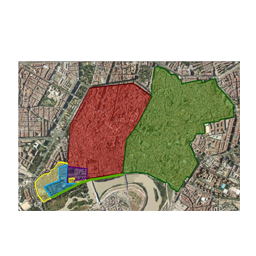
1121 A.D.
The Cordobans rebel against the Almoravid governor and expel him from the Alcazar.
1125 A.D.
Construction of the second wall of the Axerquía, with a route very similar to the definitive Christian medieval wall.
-
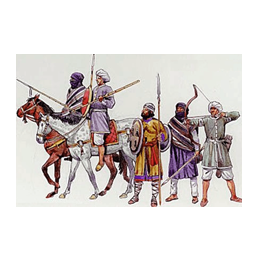
1091 A.D.
Cordova is conquered by the Almoravids, beginning a period of instability and continuous riots.
-
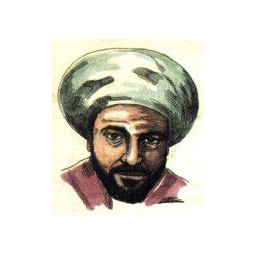
1069 A.D.
Period of instability. The monarch abadí of Seville, al-M'utamid, annexes the city.
1075 A.D.
Córdoba is taken by the ruler of the taifa of Toledo and recovered three years later by the abadies of Seville.
-

1009 - 1031 A.D.
Period of fitna or civil war. Decomposition of the Caliphate in Taifas Kingdoms.
1031 A.D.
Social and economic revitalization of the taifa of Cordoba under the so-called "Republic of Banu Yahwar".
Construction of the first wall of the Axerquia, which would encompass only the southern sector, the most inhabited outside the walls.
-

End of the
century X A.D.The primitive Calahorra is built, in times of Almanzor.
The cistern is built in the "Patio de los Naranjos" of the Aljama Mosque in Cordova and a new pavilion of ablutions is created.
-

979 - 981 A.D.
Construction of a new city, Madinat al-Zahira, east of Qurtuba, on the initiative of Muhammad b. Abi Amir, Almanzor, hayib of the caliph Hisham II.
988 A.D.
Final expansion of the Aljama Mosque adding eight naves to the east, under the patronage of Almanzor.
-
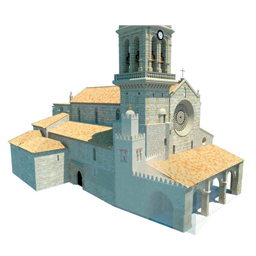
Second half of
century X A.D.Maximum urban expansion of Qurtuba.
Reformation of the mosque located on the site of the present church of Saint Lorenzo and construction of its minaret, partially preserved today.
Construction of the caliph mosques of the current sports center Fontanar and Convent of Santa Clara.
-

951 A.D.
The construction of a new minaret for the Aljama Mosque of Qurtuba begins by order of Abd al-Rahman III.
962 - 965 A.D.
New extension to the south of the Aljama Mosque ordered by Caliph al-Hakam II. The mihrab and maqsura are built.
-
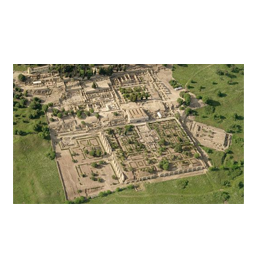
929 A.D.
Abd al-Rahman III proclaims himself the caliph of al-Andalus. It begins the Califato omeya.
936 A.D.
Work begins on the palatine city of Madinat al-Zahra, west of Cordoba. Four years later the Aljama Mosque of Madinat al-Zahra is built.
-

913 - 914 A.D.
Abd al-Rahman III orders to build double doors facing the wall of the Medina of Cordoba.
Abd al-Rahman III constructs a fountain divided in three sections in the source of the pipe that there was at the entrance of the Alcázar.
-

864 - 865 A.D.
Muhammad I makes numerous constructions in the Alcazar and in the almunias outside the walls.
912 A.D.
After the death of his grandfather, Abd al-Rahman III becomes emir of al-Andalus.
-
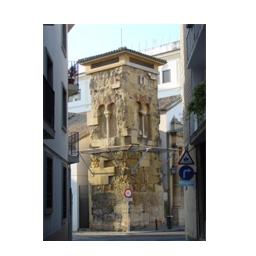
850 A.D.
The Mozarabic opposition begins in Cordoba.
864 - 865 d.C.
Muhammad I realiza numerosas construcciones en el Alcázar y en las almunias extramuros.
Finales del
s. IX d.C.Construcción de la mezquita cuyo alminar se conserva en la actual iglesia de San Juan de los Caballeros.
-
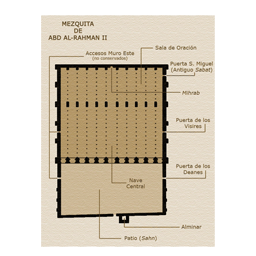
822 - 852 A.D.
Abd al-Rahman II carries out important infrastructures in the surroundings of the Alcazar, bringing water to the remains for the first time and builds the reef (Al-Rasif) next to the Guadalquivir.
833 - 848 A.D.
Extension works of the Aljama Mosque to the south, made by Abd al-Rahman II and completed by his son Muhammad.
-

804 - 805 d.C.
Al-Hakam I aborta una conspiración contra él, refuerza las murallas y ahonda el foso que rodea la ciudad.
818 d.C.
"Revuelta del arrabal" contra al-Hakam I. El emir contiene la revuelta, arrasa el arrabal de Saqunda y prohíbe constuir en la margen izquierda del río. Crecen los barrios en la orilla opuesta.
-

788 - 796 A.D.
Hisham I builds ablution room attached to the eastern facade of the Aljama Mosque and raises its first minaret.
Construction of one of the oldest mosques known until now, preserved in part in the present church of Santiago.
-

756 - 788 A.D.
Abd al-Rahman I builds the almunia of al-Rusafa, whose gardens have been considered the first "botanical garden" of al-Andalus.
786 A.D.
The works of the Aljama Mosque began under the direction of Abd al-Rahman I.
-

750 - 756 A.D.
Abd al-Rahman I escapes from the slaughter of his dynasty and establishes the Independent Emirate Omeya of al-Andalus after the Battle of al-Musarà.
766 A.D.
Abd al-Rahman I rebuilds the walls of the city.
-
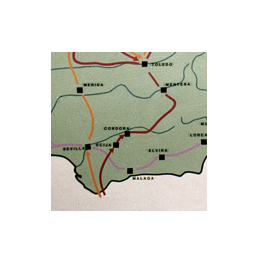
711 A.D.
A group of Muslims under the command of Tariq is uncovered in Algeciras. That same year Mugit, one of his lieutenants, conquers Cordova to the Visigoths.
716 A.D.
he emir al-Hurr installed in Cordova the first administrative center. The urban "islamization" of the city begins. Cordova stands as the Andalusian capital of the emirate dependent of Damascus.
-
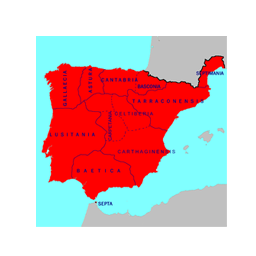
Middle of the
century VII A.D.Reform of the king Chindasvinto by means of which Cordoba becomes the civic-military capital of the Visigothic province of the Bética.
677 A.D.
A possible plague epidemic affects the city.
-
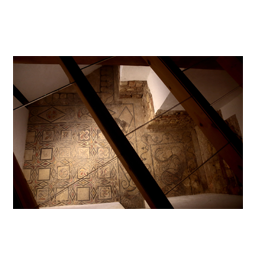
Century VI-VII A.D.
Monumentalization and enlargement of the episcopal complex. Urbanization of the old theater, whose surface happened to be occupied by houses and graves.
610 - 620 A.D.
A small basilica dedicated to Saint Felix is transformed by Bishop Agapio II into a major church dedicated to Saint Zoilo.
-
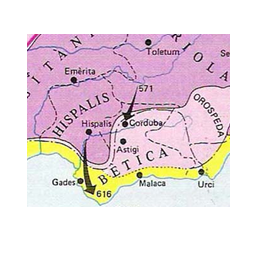
550 A.D.
The Visigothic king Agila fails in his attempt to control the city. First mention of the church of Saint Acisclo.
-
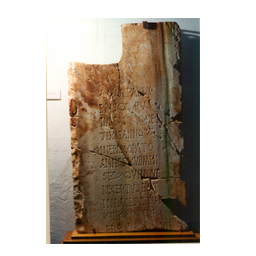
549 A.D.
Lampadio, bishop of Cordoba, died, who had to be buried in Cercadilla, where his funeral inscription was recovered.
550 d.C.
El rey visigodo Agila fracasa en su intento de hacerse con el control de la ciudad. Primera mención de la iglesia de San Acisclo.
-

Century V A.D.
Construction of a fortified enclosure (castellum) in the southwestern quadrant of the city.
-
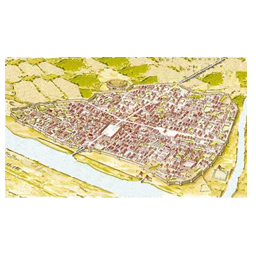
Second half of
century IV A.D.Loss of the capital of the Baetica province of Corduba in favor of Hispalis.
Destruction of several thermal complexes and numerous domus.
-

353 - 360 A.D.
Last honorific inscription documented in the colonial forum.
-
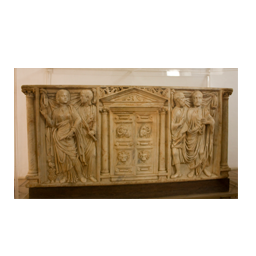
324 - 335 A.D.
Date of preparation of the Christian sarcophagus currently preserved in the Alcázar de los Reyes Cristianos.
-

303 - 304 A.D.
Martyrdom of St. Acisclo, San Zoilo and the Three Crowns.
-

End of the
century III A.D.
Principles of
century IV A.D.Construction of the monumental complex of Cercadilla and the Villa of "Santa Rosa".
Abandonment and looting of the amphitheater, forum novum and the temple of Claudio Marcelo Street.
-

Around
295 A.D.Osio becomes Bishop of Cordoba.
-

Second and third
Third of century III A.D.Start of a prolonged process of reinforcement of the section of wall located in the Alcázar de los Reyes Cristianos.
-
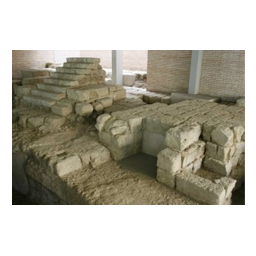
250 - 260 A.D.
A possible earthquake causes the partial collapse of the theater and the disuse of the Aqua Augusta Vetus.
-
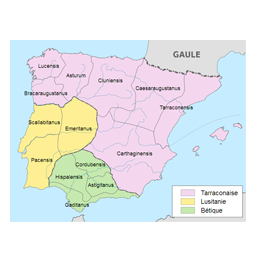
Middle of the
century III A.D.Abandonment of the term Colonia Patricia and replacement for the one of Respublica Cordubensis.
Changes in the administration of Baetica province.
Beginning of the progressive depopulation of the suburban (vici) neighborhoods that surrounded the city.
-

First third of
century III A.D.Lucius Iunius Paulinus organizes gladiatorial, theatrical and circus games and donates statues worth 400,000 sesterces.
-
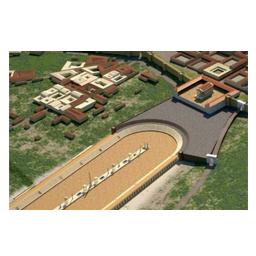
End of the
century II A.D.Dismantling of the circus.
Maximum expansion of suburban vici.
-
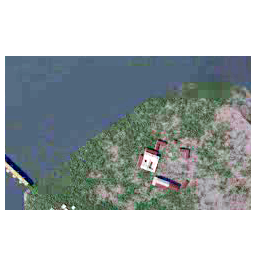
Second half of
century II A.D.Reform of a thermal complex located next to the Calahorra.
Import of decorated marble sarcophagus.
-
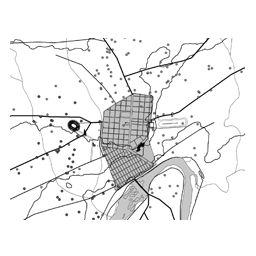
Century II A.B.
The necropolis of Colonia Patricia reaches its maximum extension, about one mile (1.6 km) from the city walls.
-

Principles of
century II A.D.Possible restoration of temple of forum novum.
-

End of the
century I A.D.Culmination of the process of monumentalization of the city.
Proliferation of neighborhoods and large suburban villages.
-
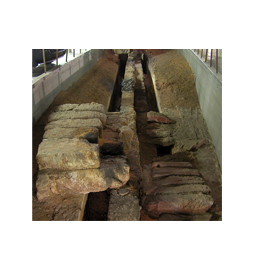
81-96 A.D.
The second aqueduct of the city is built, Aqua Nova Domitiana Avgusta.
-

Flavia era
69-96 A.D.Development of new funerary roads in the southern part of the city, such as the fossilized in the current Avenida del Aeropuerto.
-

Nero era
54-68 A.D.Southern extension of the wall and consolidation of port infrastructures.
Construction of the circus next to the religious complex of Claudio Marcelo street.
-

Middle of the
century I A.D.Start up of the amphitheater and construction of a new suburban neighborhood adjacent to it.
-

Claudius era
41-54 A.D.The construction of the religious complex formed by the temple of Claudio Marcelo Street and the square in front of it begins.
-

Second quarter of
century I A.D.Building of the Bridge Gate.
-
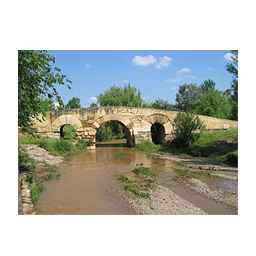
35 -36 A.D.
Possible construction of the Roman bridge over the Pedroche stream.
-
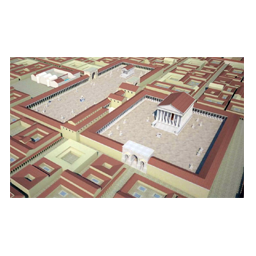
Tiberius era
14-37 A.D.Construction of the so-called forum novum.
-

15 - 30 A.D.
Construction of the funerary tumulus of Puerta de Gallegos.
-
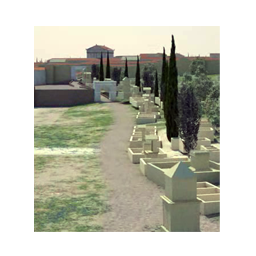
First quarter of
century I A.D.Conformation of the first "ways of the tombs" around vía Augusta, vía Corduba-Hispalis, vía Corduba-Emerita and Camino del Pretorio.
-
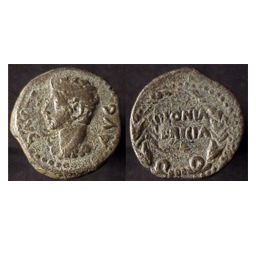
13 - 12 A.D.
Emission with imperial permission of coins that include the inscription COLONIA PATRICIA.
-

15 B.C. - 5 A.D.
Construction of the theater with the intervention of the Emperor himself and local patrons.
-

Augustean era
The Colonial Forum is reorganized and Aqua Augusta is built, the city's first aqueduct.
-

27 B.C.
The city becomes Colonia Patricia, capital of the province Hispania Ulterior Baetica.
Cayo Octavio receives the title of Augustus. The imperial era begins.
-
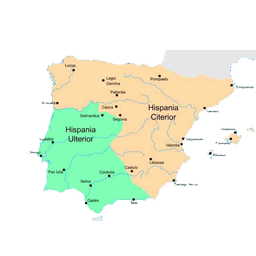
43 B.C.
During the time of the triumvirate, Corduba regains its role as the political center of the Ulterior
-

45 B.C.
Definitive conflict between Caesarean and Pompeian. Siege, conquest and destruction of the city by Julio César.
Battle of Munda. The dictatorship of Caesar begins.
-

49 B.C.
Julius Caesar meets in Corduba to the representatives of the cities of the Hispania Ulterior.
Caesar crosses the Rubicon, thus initiating the Second Civil War.
-
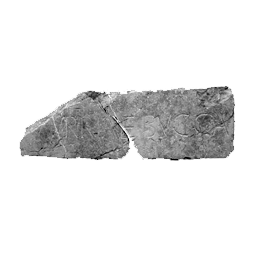
Middle of the
century I B.C.Funeral inscription of the slave Bucca, the oldest located so far in Cordova.
-
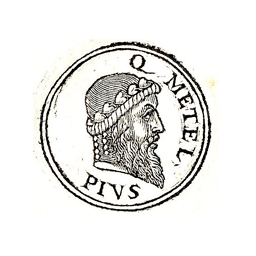
74 B.C.
Quinto Cecilio Metelo Pío is enthusiastically and luxuriously received in the city.
-

76 B.C.
An earthquake destroys Corduba.
-
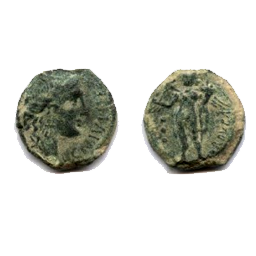
80-79 B.C.
First minting of coin with the inscription CORDVBA.
-
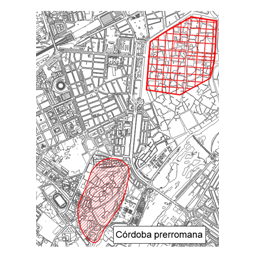
End of the
century II B.C.Disappearance of the indigenous town of Corduba and relocation of its elites in the new city.
-

113-112 B.C.
It is mentioned the existence of a forum in the Roman city.
-

143-141 B.C.
The city is besieged by Viriato, according to the anonymous work De se ad patriam.
-
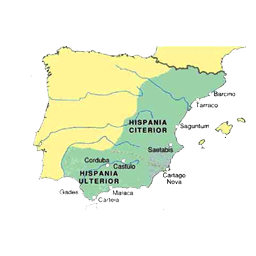
Middle of the
century II B.C.Election of Corduba as de facto capital of Hispania Ulterior.
-
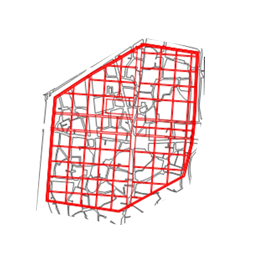
169/168 or
152/151 B.C.Foundation of the Latin Colony of Corduba by M. Claudio Marcelo.
-

First third of
Century II B.C.First evidences of the Roman presence in Cordova, possibly of military character.
-

206 B.C.
Battle of Ilipa, which grants the Romans, sort of, the control of the Guadalquivir Valley.
-
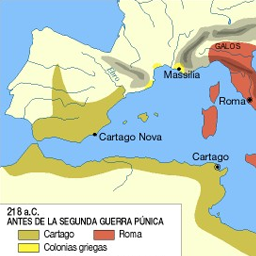
218 B.C.
In the context of the Second Punic War, Silio Italic (3, 401) mentions Corduba among Hannibal's allies and characterizes it as decus aurifera terra, while he tells us about the supposed chieftains of the city, Phorcys and Arauricus. The reliability of this author and the fact that he writes his poem at the end of the century I a. D. must be taken into account.